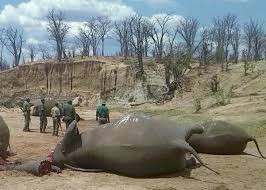
JOHANNESBURG — There is considerable scope to increase the production of sugar in Southern Africa for use as ethanol fuel provided regulatory constraints were overcome, the South African Institute of International Affairs (Saiia) has said in a study on the barriers to economic growth in the region.
It noted that despite the heavy dependence of Sadc countries on imported petroleum products, the existence of a large market in SA and potentially significant sources of supply of renewable fuels in Mozambique, Zambia, Zimbabwe, Angola, Malawi and Mauritius the manufacture of bio-diesel and fuel ethanol was limited.
The study identified sugarcane as the most viable potential feedstock for ethanol production as the industry was well-established regionally, with substantial sugarcane and sugar production as well as a number of existing and emerging ethanol-producing countries.
“The production of ethanol is expanding regionally, where suitable regulation exists, driven by a commercial imperative in the global sugar sector towards diversification into ethanol and chemical products and co-generated electricity,” the report noted.
“In Sadc this has been accelerated by the collapse in value of the region’s traditional sugar export market, the European Union.”
The key constraint to the development of a regional market for ethanol, however, was regulatory uncertainty or the absence of regulation in many Sadc states.
Progress in SA has been slow with the government only promulgating the mandatory blending regulations in 2012, 10 years after the publication of a national biofuels strategy.
The government has set October 1 as the date from which petrol refiners will be obliged to blend any biofuel produced in the country into their product.
- Chamisa under fire over US$120K donation
- Mavhunga puts DeMbare into Chibuku quarterfinals
- Pension funds bet on Cabora Bassa oilfields
- Councils defy govt fire tender directive
Keep Reading
However, biofuel manufacture will not commence before the publication of the final regulatory framework for biofuels which will outline the conditions for government subsidies.
Ethanol Producers’ Association secretary Alf Stevens points out that as it would take a further two years for ethanol distilleries to be built, fuel ethanol would only be available by mid-2017 “at the earliest”.
The Saiia report noted, however, that the payoff for member States and the Sadc region in addressing the regulatory constraint would be enormous.
It calculated that up to 60% of new Sadc petrol requirements over the next 20 years, growth included, could be met using only 2% to 4% of the available cropland and 6 000 megawatts (MW) to 9 000MW electricity could be generated, equivalent to 12% to 18% of 2011 required capacity.
“This would require 120 sugar mills with a production capacity of 320 000 tonnes of sugar each a year. It is estimated that a remarkable 1,5 to 1,8 million direct jobs and four million indirect jobs could be created through such diversification.
“Local sourcing of necessary parts and services will provide significant opportunity for industrialisation and value chain development (for example ethanol plants in SA would require R20bn in parts and services),” the report stated.
The sector’s growth would depend on overcoming the resistance of vested interests in the liquid fuel sector, such as local petroleum firms or foreign multinationals.
Saiia’s study also looked at alternative sources of energy for the energy-intensive mining sector which has been hard hit by load shedding and has a strong interest in producing its own electricity, including renewable energy.
“Capital costs for renewables have dropped significantly, so renewable solutions are in many instances cheaper than diesel,” Saiia said.
“Renewable technologies are most attractive to mining projects in remote regions with little or no access to established electric grids.”
— BD Live










